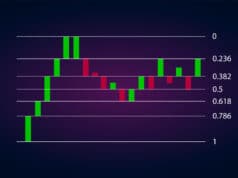A forex quote is an expression of the price of one currency in terms of its value against a different currency. In the forex market, currencies are traded in pairs. Currency symbols are presented in terms of three-letter codes, with each one being unique to the issuing country.
Each pair has a base currency, which appears first, and a quote currency which forms the second half of the pair. For instance, in NZDUSD, the New Zealand dollar is the pair’s base currency while the United States dollar is the quote currency. Therefore, if the pair’s price is given as 0.7000, it means that 1 New Zealand dollar costs 0.7000 US dollars.
Bid and ask price
Currencies are traded in forex markets by quoting two prices. First is a bid price which refers to the price at which you can sell a currency, and secondly, there is the ask price, which is the currency’s buying price.
Because forex traders are in business, their selling price for a currency (ask price) is usually higher than the price at which they are willing to buy the currency (that is, the bid price). Traders will typically buy a currency when they believe that it will appreciate and sell it when they think that its value is likely to reduce in the coming days.
Bid and ask prices of currencies fluctuate depending on not only the market demand and supply forces, but also because of changes in the economic and political climate of issuing countries.
The nature of forex trading has made it a norm that for every transaction, you will pay more when buying a currency and receive less when selling it. Therefore, for you to profit from trading forex if you buy the euro, for example, the only way to profit from its subsequent sale is to wait until it appreciates. However, if you buy it and sell it immediately, you will almost certainly incur a loss.
Spreads
Spreads are the mechanism through which forex brokers earn their profits. A spread is obtained by subtracting the bid price from the ask price. Therefore, the spread is the cost you pay for the trade. Spreads are what brokers gain for facilitating forex trading. Therefore, to fend off competitors, different brokers have different spreads.
Traders have to assess the differences in the value of spreads offered by various brokers to determine the one with the best spreads, thereby enlarging their profit margins. Currency pairs are classified into three main categories: minors, majors, and exotics.
Majors are pairs with USD in them and have the largest traded volume as well as the highest liquidity in forex markets.
Majors have comparatively smaller spreads. On the other hand, minor pairs have lower liquidity and smaller traded volume, which results in wider spreads. Apart from spreads, lot sizes also influence the cost of a transaction.
Direct and indirect quotes
Quotes can also be given as direct or indirect quotes. For each pair, the base currency is the indirect quote, while the quote currency is termed as direct. For example, if the EURJPY pair is quoted as 131.38, a person interested in buying the Japanese yen using the euro will get 131.38 yens for every euro. This is known as a direct quote.
However, if they want to know the indirect quote of the EURJPY pair, they will have to calculate the inverse of 131.38. In this case, 1 Japanese yen will be worth 0.00761 euros. Many forex brokers give their clients both quotes to make it easier for traders to compare rates and make transactions easier.
Pips
A pip is the smallest unit of difference in the value of a currency pair in a forex trade. Pips are used as a way of making it easier to understand the margin of change during a transaction involving different currencies. The standard size of a pip is the fourth decimal point in a currency quote whose base currency is the US dollar. The smallest pip is, therefore, 0.0001.
The Japanese yen is an outlier in this regard because of its significantly smaller size for every USD. Therefore, a pip in a pair with the yen is expressed as two decimals.
Note that since currencies are typically traded in lots, the size of a pip in a small lot is smaller than that of a bigger lot.
For example, a pip in a standard lot with USD base currency is equivalent to 10. A pip in a mini lot is equivalent to 1 and 0.1 in a micro-lot. Inasmuch as they are a small fraction of the currency value, pips are key indicators of price movement in forex. The difference in pips between ask and bid prices can determine whether you incur a loss or make a profit.
The bid price is the fourth decimal point in a quote, while the ask price is the extra digit making the difference in the two quotes. For example, if the GBPUSD quote is given as 1.3852 24 or 1.3852 4, it means that 10,000 will get you 13,854, but selling the same amount of GBP will get you 13,852.
Bottom line
Forex quotes are essential elements of trade in currency markets. Traders and investors must understand them to know how to generate profit and minimize losses.




